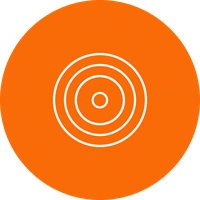
ITEA Impact story
EAST-EEA

Paving the way towards revolutionary automotive software development




Impact highlights
- EAST-EEA paved the way to the automotive industry's standardised platform for automotive applications: the Automotive Open Systems Architecture (AUTOSAR). AUTOSAR is now a global industrial initiative that is bringing together about 250 original equipment manufacturers (OEMs), Tier 1 automotive suppliers, software suppliers, semiconductor manufacturers, tool suppliers and others worldwide. The initial ITEA partners still form the majority of the current core group.
- The AUTOSAR software and therefore the EAST-EEA results are today part of each single embedded ECU
throughout the automotive sector worldwide and the component-oriented software development method
is now state-of-the-art in the embedded environment.
- To give an impression of the order of magnitude of this widespread success: when production for AUTOSAR ECUs started in around 2008, this concerned an average of more than 50 million passenger cars per year. Nowadays smaller cars have today maybe 50 ECUs and premium vehicles more than 200. As an estimate we multiply 10 years times 50 million cars times 100 ECUs = 50 billion ECUs are based on the EAST-EEA project.
- Based on EAST-EEA, the EAST-ADL language is an established, AUTOSAR-aligned representation for Systems Engineering information of automotive embedded systems. The language acts as a lingua franca between tools and organisations and is currently maintained by the EAST-ADL Association. Its members are, employees from among others: Carmeq/VW, FIAT, Hyundai, McLaren, Volvo, Volvo Cars, Bosch, Continental, CEA LIST, Fraunhofer ESK, INRIA and KTH.
- Multiple standardisation documents reflecting the project's case studies have been adopted by the European Telecommunications Standards Institute (ETSI) and have been forwarded to international standardisation bodies.
- The EAST-EEA project acted as an important reference platform for further development in several ITEA projects over the course of many years.
The challenge posed at the beginning of the new
millennium in the evolution of vehicles was the
implementation of integral electronic control of in-vehicle
and extra-vehicle functions in order to improve safety and
comfort in all areas of the vehicle – from engine, steering
and braking systems to communications, entertainment
and human-machine interfaces. The problem was that,
when a new component is introduced, not only must it be
tested thoroughly but so must all existing components
to ensure none has been adversely affected. As a result,
introducing new electronics puts development costs
and cycle times under enormous pressure. The ITEA
project EAST-EEA successfully addressed the need for
software and hardware interoperability by developing an
integrated platform based on open-systems architecture.
Project results
In the EAST-EEA project, twenty-three consortium partners represented all the major players in the automotive sector, including manufacturers, their suppliers, SMEs with essential control software expertise, and academic and research institutions. Key project results included:
- Creation of standard middleware that integrated all the different electronic systems and components from different suppliers into the complete network of a vehicle system;
- Definition of a publicly-available dedicated ADL, Architecture Description Language to make all this accessible; and
- Development of the specialist tools necessary, including test tools and demonstrators.
The middleware, as well as the communication layer concepts, were implemented and validated in demonstrators in the different automotive areas of body electronics, powertrain, chassis, telematics and humanmachine interfaces. The new software architecture allowed easier integration of new electronics in vehicles through plug-and-play technology, dramatically reducing development time and costs to market. Furthermore, the project also guaranteed a level of quality that is essential to the competitiveness of European vehicles.
Exploitation
Thanks to the EAST-EEA approach, vehicle manufacturers acquired an integrated framework for software and communication interfaces, tool environments and rules while suppliers benefited from standard solutions and reuse became possible, with new vehicle models able to be developed faster and product quality improved.
The outcome of EAST-EEA formed the basis for the automotive industry's standardised platform for automotive applications: the Automotive Open System Architecture (AUTOSAR) initiative. The AUTOSAR partnership was formed in July 2003 as a spin-off from EAST-EEA, taking the ADL initially defined in the EASTEEA project and subsequently refining this to describe automotive electronic systems through an information model that captures engineering information in a standardised form.
While AUTOSAR industrialised the software architecture aspects of EAST-EEA, systems engineering aspects like requirements, variability, safety and timing were addressed in related initiatives. The EAST-ADL language is fully integrated with AUTOSAR and covers a wide range of automotive development concerns. The language is maintained by the EAST-ADL Association, and the EATOP Eclipse project provides a reference implementation that is aligned with Artop, the corresponding platform for AUTOSAR.
There are also several European and national projects building on EAST-EEA. For example, based on AUTOSAR+EAST-ADL+FMU models, Volvo is currently providing simulation support for continuous integration.
The successes of other ITEA projects like AMALTHEA, SAFE and TIMMO-2-USE, in terms of revolutionising software development in the automotive industry and the impact they have had and will have on subsequent related projects, can be traced back over the past two decades to EAST-EEA. They are projects that have added something new, something extra in response to the state-of-the-industry and market demands.
More information
Download EAST-EEA impact storyRelated projects
EAST-EEAOrganisations
CEA (France)Continental Automotive (Germany)
Continental Automotive France SAS (France)
INRIA (France)
Robert Bosch (France)
Volvo (Sweden)

